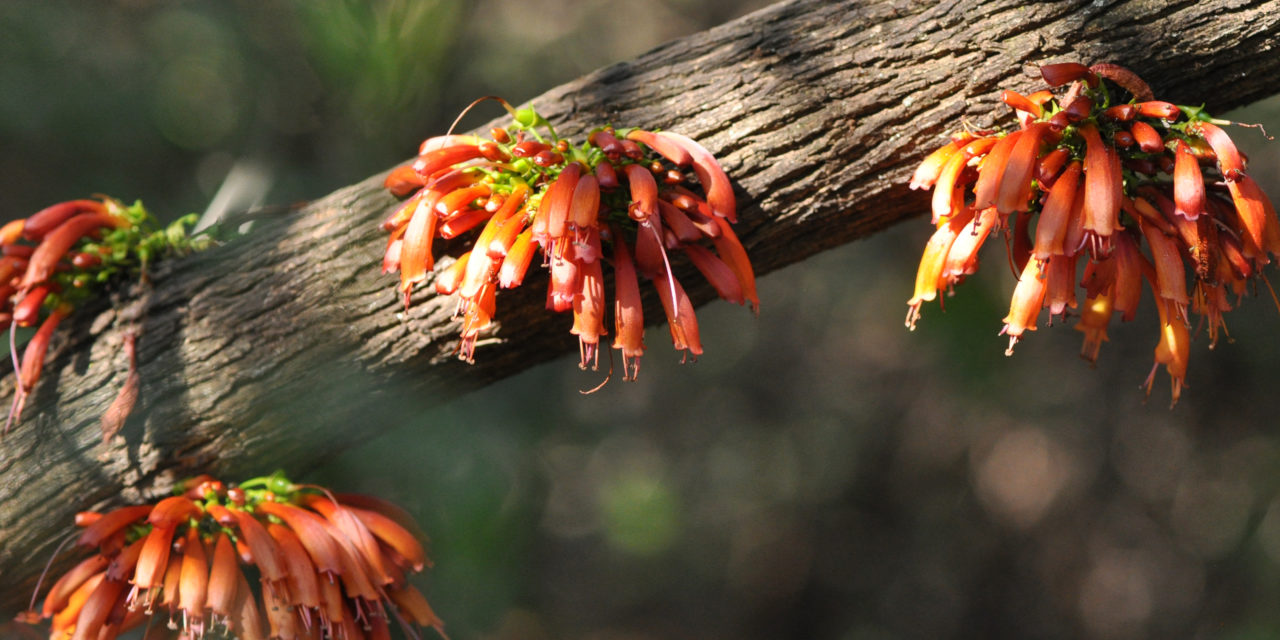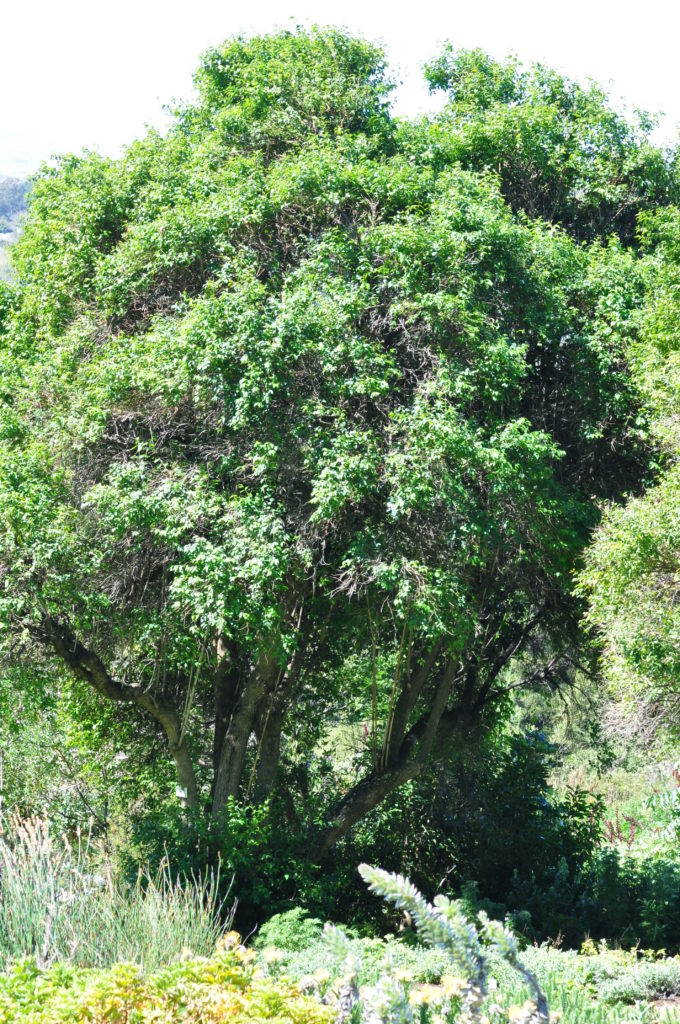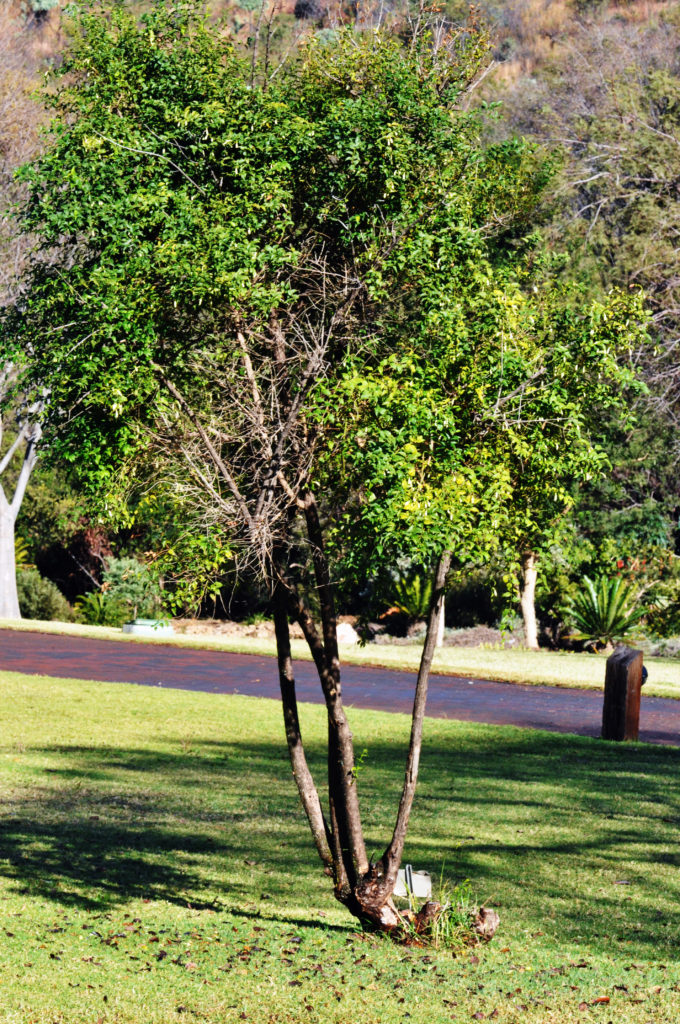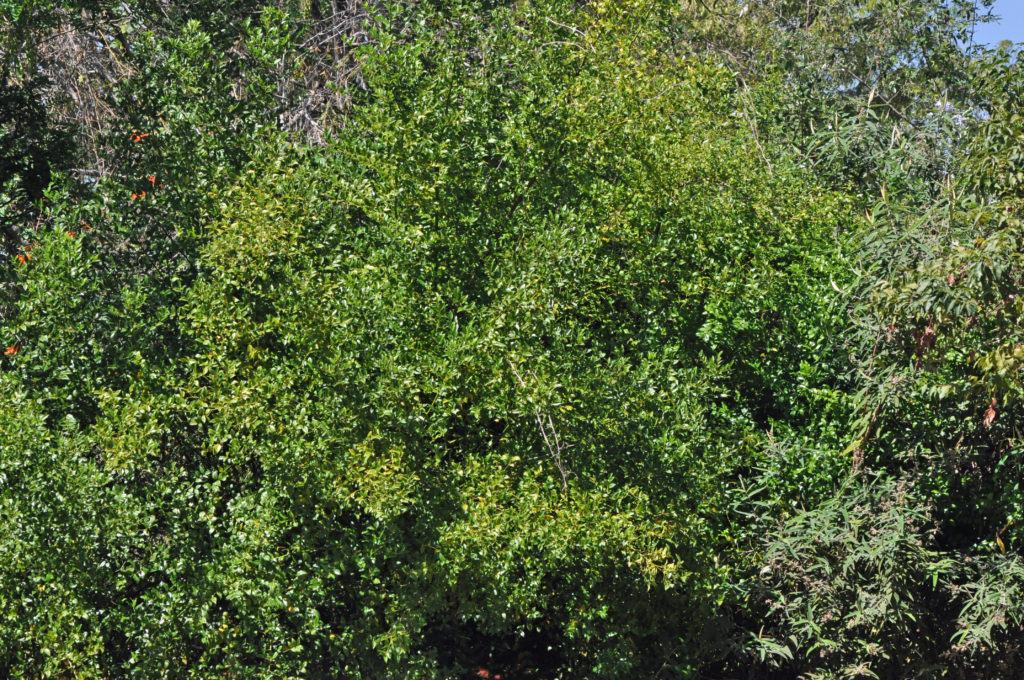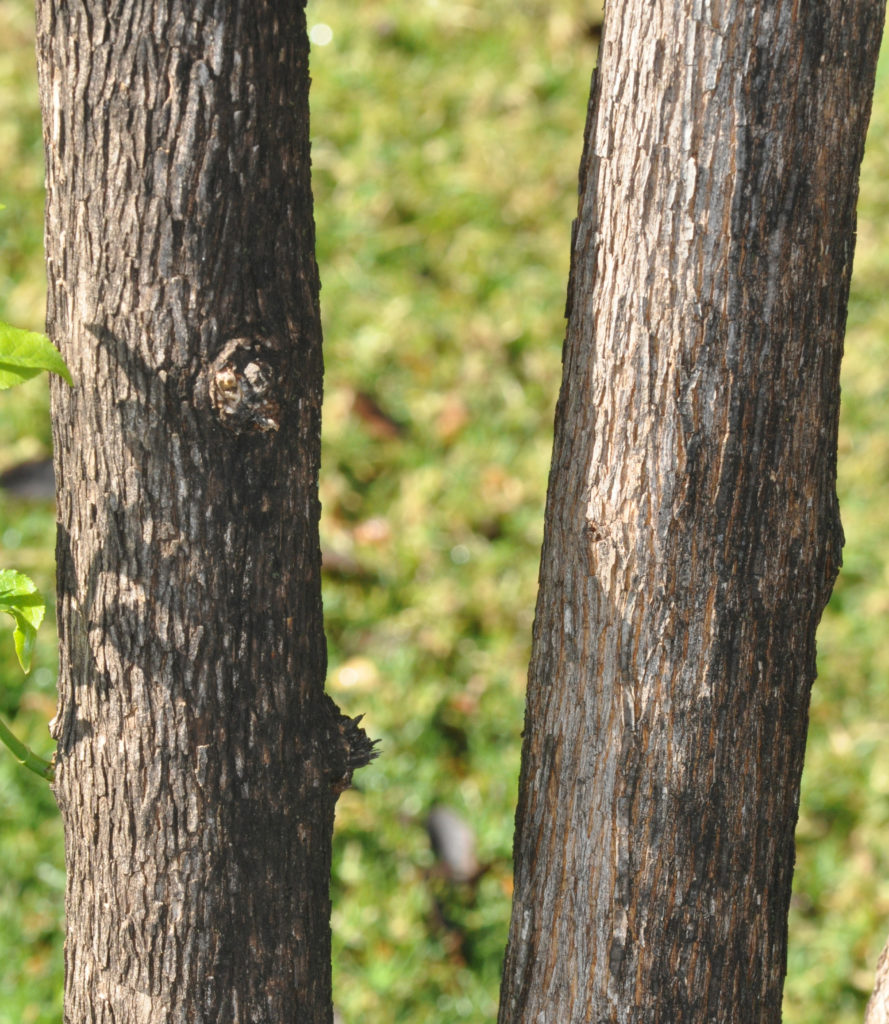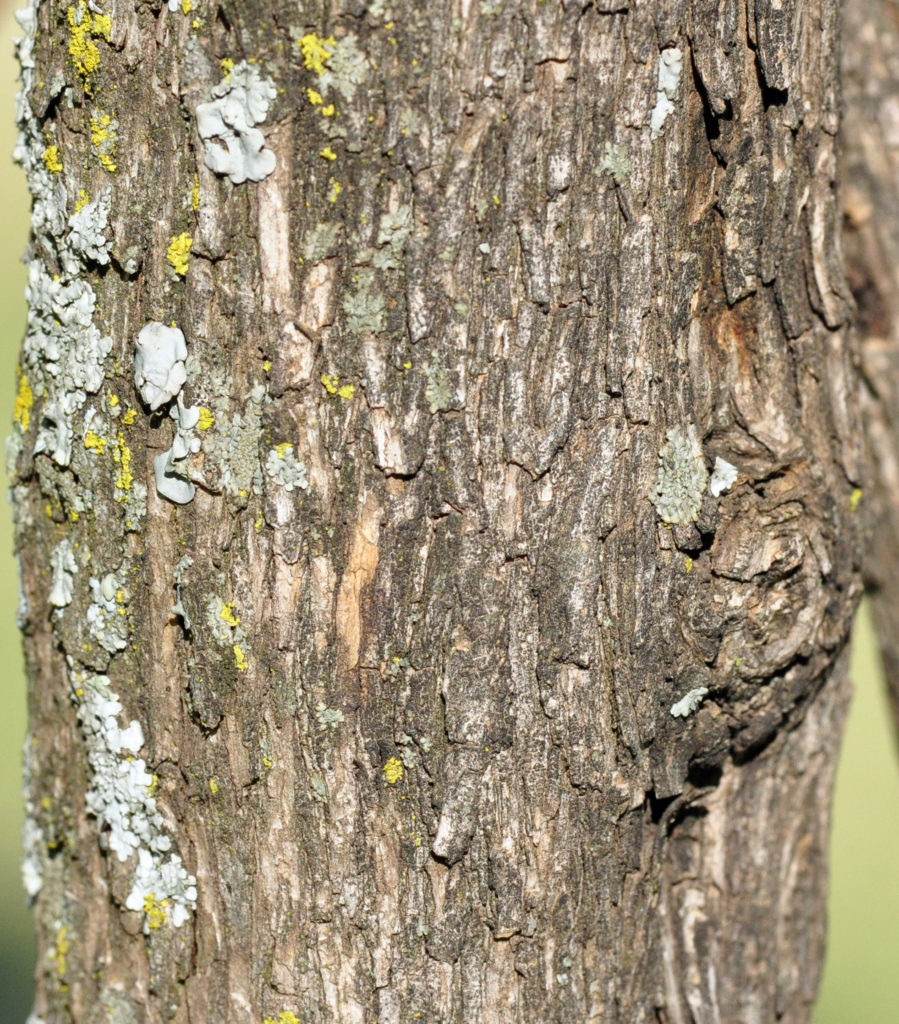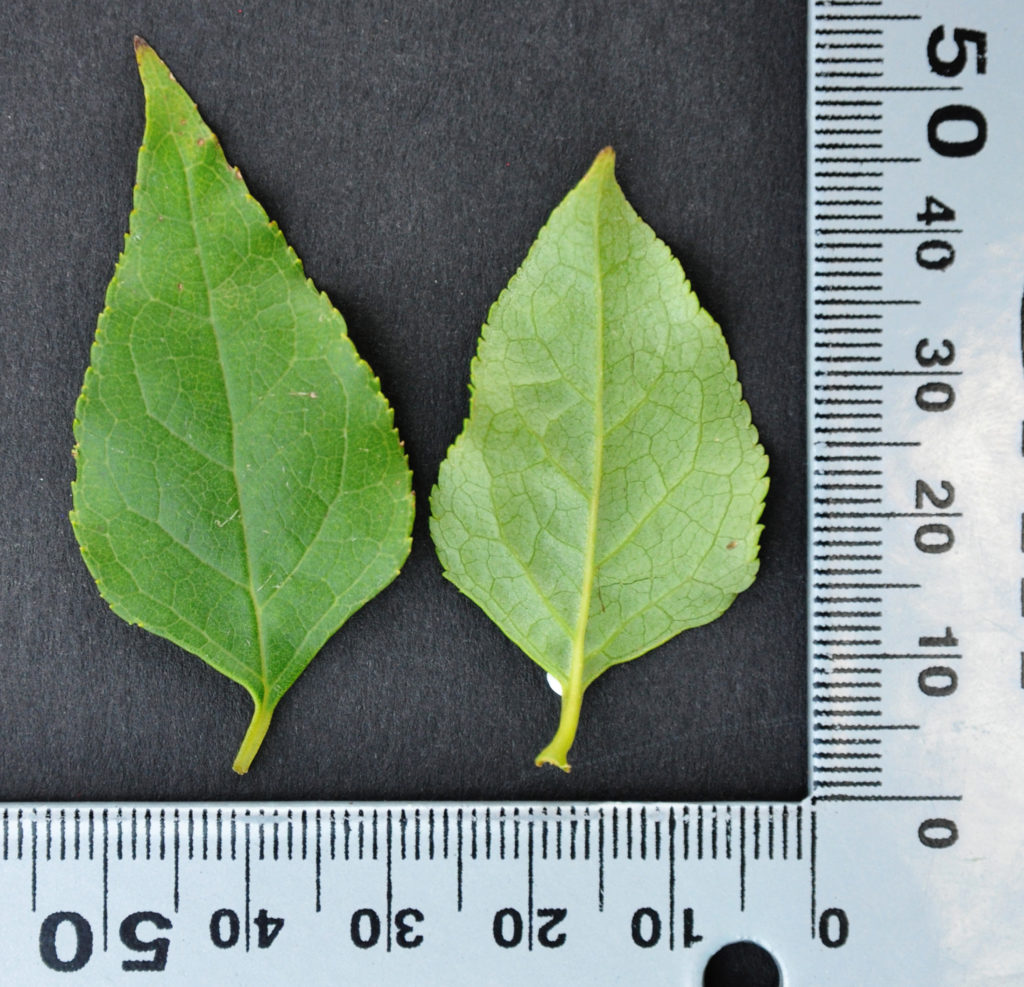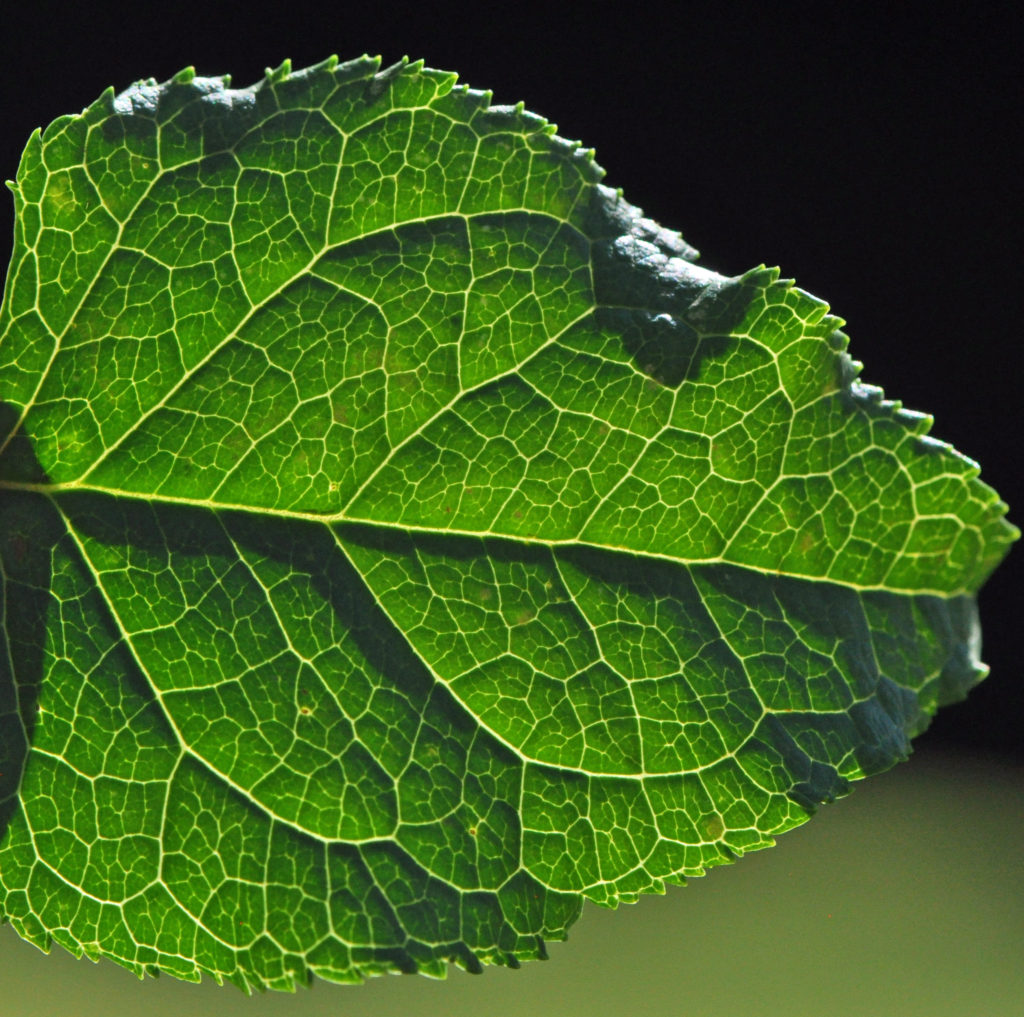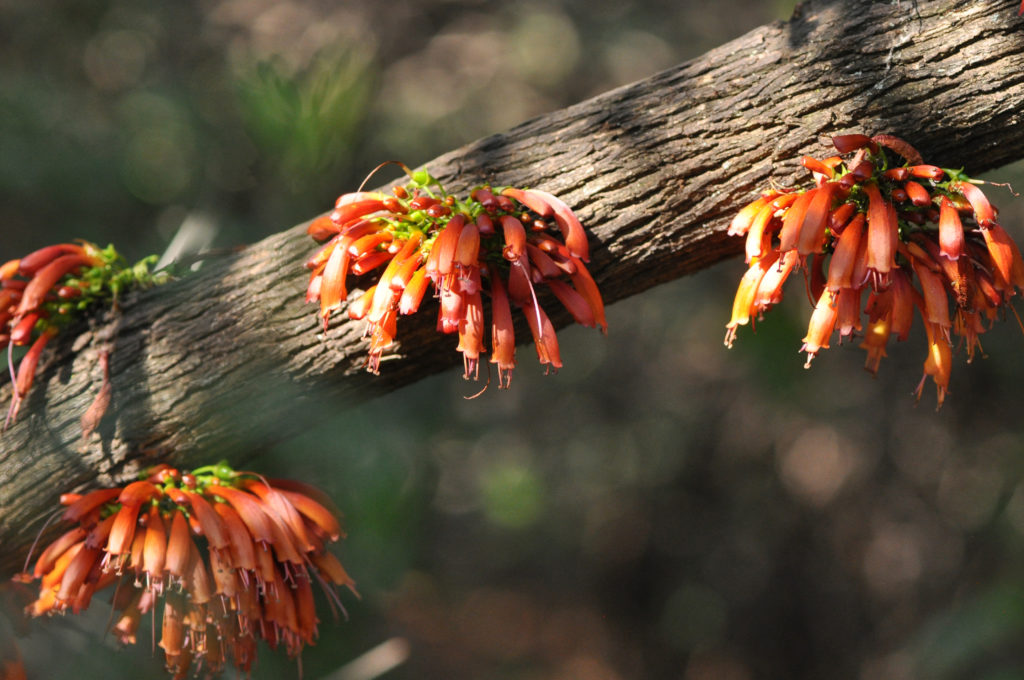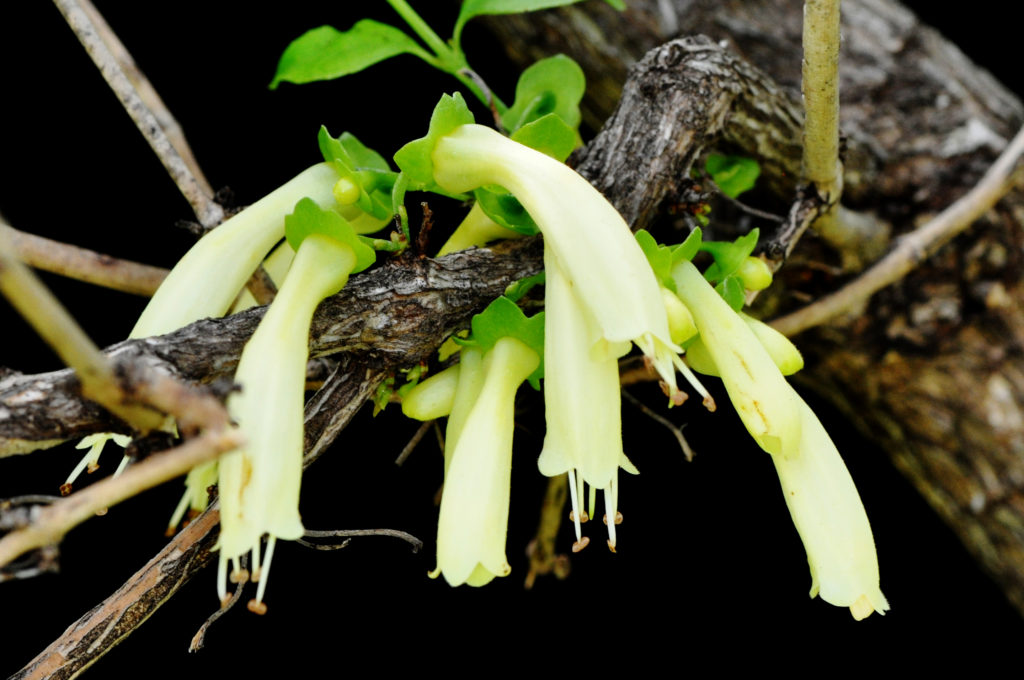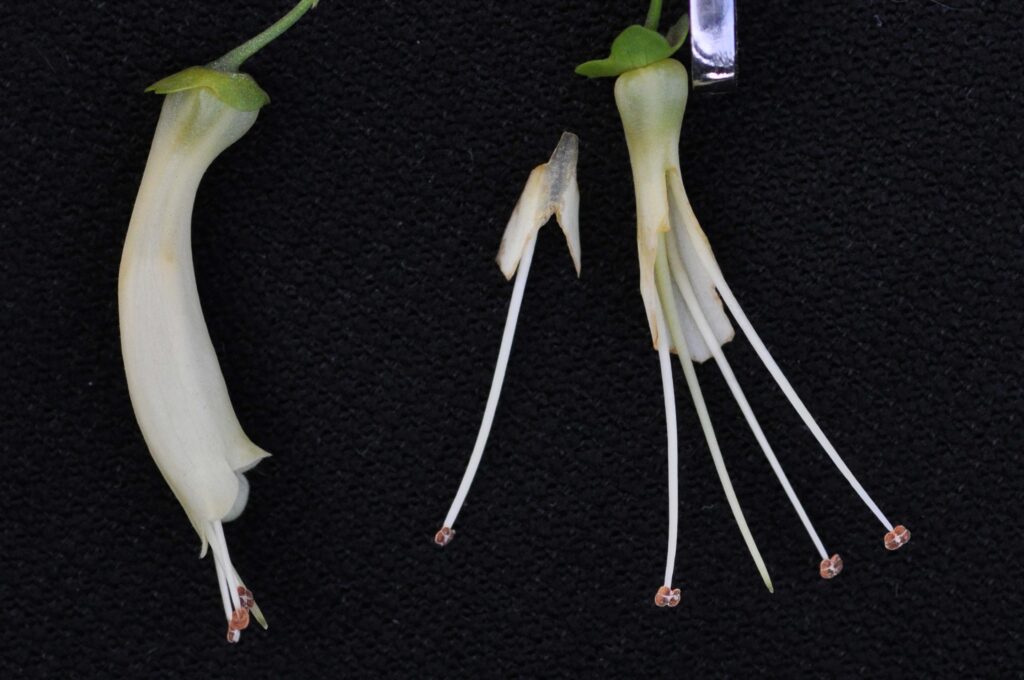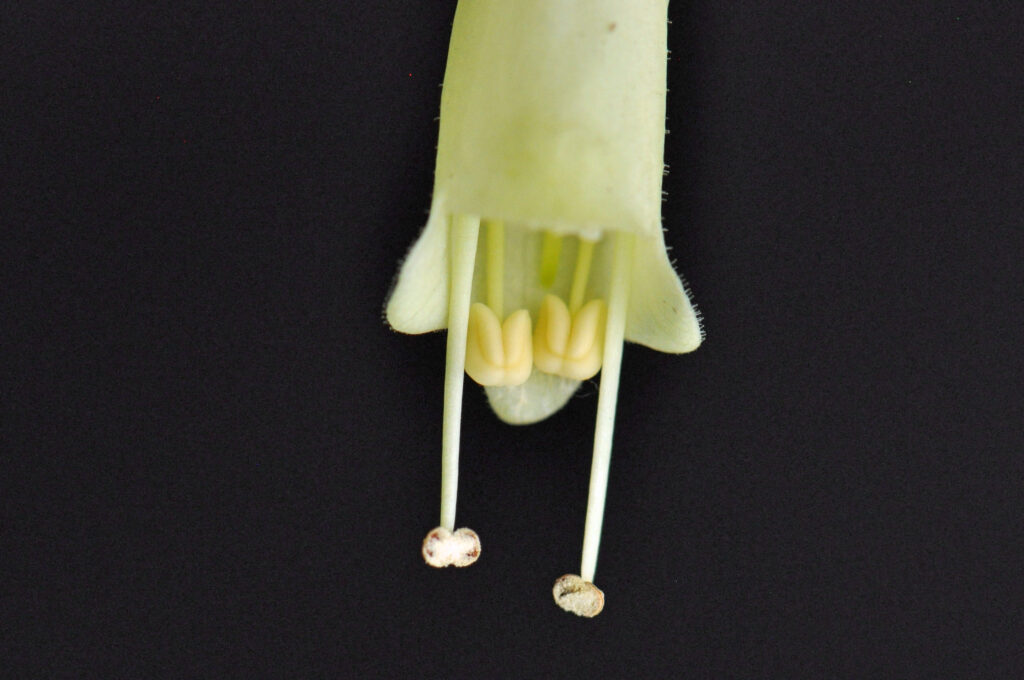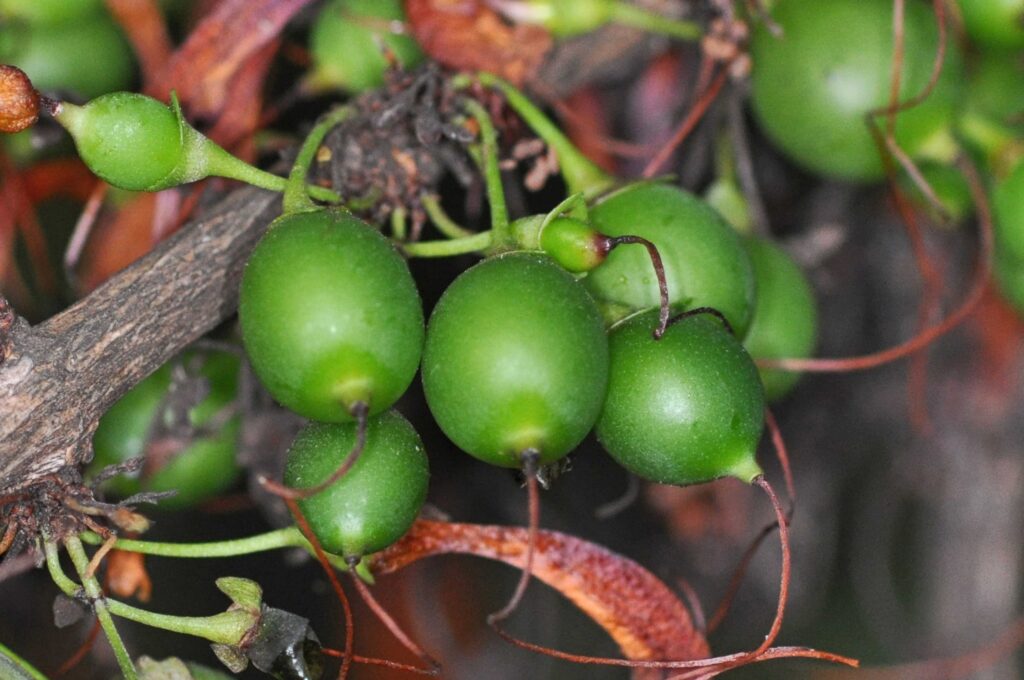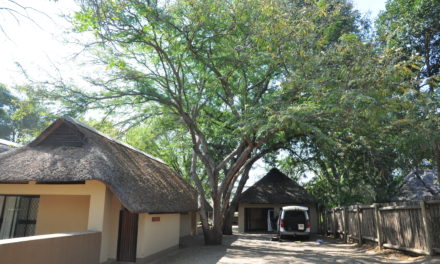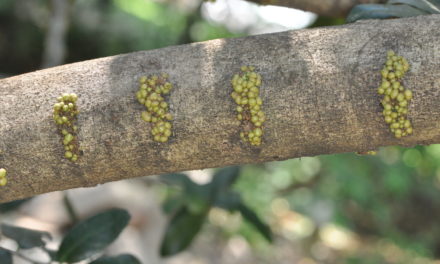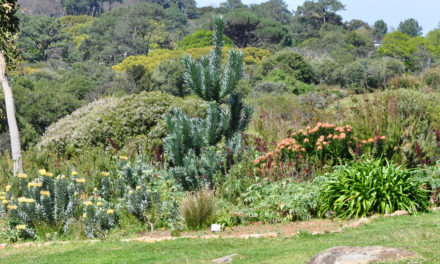General Info – summary
Attractive widespread plant is a shrub or Tree to 12m high, with shallowly fissured brownish bark. The ovate, simple & opposite Leaves have toothed margins & lack stipules. The striking, bisexual, zygomorphic Flowers with bilabiate petals are red, orange or cream coloured and may appear on old wood. Stamens – didynamous. 1 superior ovary with exerted style. Fruit: indehiscent berry + flat narrowly winged seeds.
Description
Halleria lucida
SA Tree No. 670.
Common names: (Afr) Geelhoutkop, Kinderbessie, Notsung, Ouhout, Septee, Wilde Druiwe, Witolienhout, Witolyf, Witolyfhout, Witolyn. (Eng) Halleria, Hilarious Lucy, Olive, Tree Fuchsia (usually applied to Schotis sp.), White Olive (referring to the wood colour), Wild Fuschia. (isiXhosa) Iliminza, Inkobe, Isibethankunzi, Umbinza. (isiZulu) Iminza, Iminya, Indomela, Ubutswhwala-benyoni, Umbinza, Umobibi, Unobhibhi, Unondomela, Ubutshwala-benyoni. (Northern Sotho) Mothebere, Motheberebe. (Setswana) Lebetsa. (siSwati) Libinda, Londomela, Umbinda, Umbinta. (Tshivenda) Murevhe.
Family: Stilbaceae: (Family with 6 genera and about 14 species). Local genera on this website include Anastrabe, Bowkeria, Halleria, and Nuxia. Members of this family have simple and entire Leaves that lack stipules and have recurved margins. Non-stellate hairs are present. Flowers are bisexual and zygomorphic or regular and the corolla is funnel-shaped and usually 2-lipped. The usually 4 Stamens are epipetalous, and the usually superior Ovary initially has 2 locules each with 1 ovule. Fruit is usually a dehiscent capsule but may be a berry.
Name derivation: Halleria named after a Swiss anatomist, physiologist, naturalist, encyclopedist, bibliographer and poet: Prof Albrecht von Haller (1708-1777). lucida – shining – referring to the leaves. There are 3 species of the genus Halleria in southern Africa. The other two are H. elliptica and H. ovate. Three species occur in southern Africa and 2 additional species in Madagascar.
Conservation: National Status: L C. (Least Concern). Assessment: 2005 (W. Foden and L. Potter).
Tree
This Tree is usually up to 12m high but may reach 18-20m in a forest. It may also be a shrub. When growing in the open, the plant may be multi-stemmed (photo 63) and may develop trailing branches. Here the tree tends to have a spreading crown. The crown may also be rounded (photo 463) and branching higher up. Young stems may be greenish and arching. Branches tend to be opposite, stiff and dense. The Trunk is usually erect and up to 30cm in diameter. Bark is pale greyish brown, rather rough and may be flaky. It is longitudinally, but not deeply, grooved (photo 59 and 633 under Flowers). At the base of these grooves, a lighter coloured underbark may be seen (photo 676). On this photo, grey Lichen is visible. Lichen is a complex organism that develop a mutualistic relationship (both benefit) between Fungi and either algae or cyanobacteria. The fungi supply protection as well as water and mineral salts and the algae or cyanobacteria use photosynthesis to produce food for the fungi. Lichen does not harm the plant.
- 253. 2018/09.11. Kirstenbosch NBG. Photo: David Becking.
- 63. 2014/06/03. Walter Sisulu NBG. Photo: David Becking.
- 463. 2017/08/15. Pretoria NBG. Photo: David Becking.
- 59. 2014/06/03. Walter Sisulu NBG. Photo: David Becking.
- 676. 2016/08/30. Walter Sisulu NBG. Photo: David Becking.
Leaves
On this usually evergreen tree, the slightly drooping Leaves are simple (have a single blade, which may have incisions but are not deep enough to divide the leaf into leaflets) which are in opposite pairs and thinly leathery. The hairless leaves are broadly Ovate (shaped like an egg) and up to 10 x 7cm (photo 558). Leaves on coppice shoots (when stems are cut or burned, it causes regrowth from the stump or roots). These shoots may be larger. Leaves are shiny bright to dark green above and lighter below (photo 558). The Veins are slightly sunken above and raised and more visible below. Veins are best viewed by holding the leaf against a strong light/sun (photo 1 006). The pointed Apex is tapering to attenuate (showing a long gradual taper – photo 558). The Base is broadly tapering to square and may be asymmetric. The Margins on both sides, are serrate (saw-toothed margin with teeth pointing forward) to scalloped (photo 1 006). Main side veins merge and join with others prior to reaching the margin. The Petiole (stalk of leaf) is up to 1,3cm long. Stipules (basal appendages of the petiole) are absent.
- 558. 2014/10/28. Walter Sisulu NBG. Photo: David Becking.
- 1 006. 2015/11/24. Walter Sisulu NBG. Photo: David Becking.
Flowers
The showy, red, orange (photo 633) or light cream coloured (photo 372) Flowers are about 4cm long, bisexual, 4-merous (-merous: having a specific number of parts including in petal/sepal whorls – photo 991) and zygomorphic (irregular flower: when corolla is divisible into 2 equal halves in one plane only). Flowers are borne in leaf axils on young branches or are cauliflorous (the production of flowers and fruit from their main stems or woody trunks rather than from new growth and shoots – photo 633). Other cauliflorous plants include Englerophytum magalismontanum – Stamvrug and Drypetes natalensis var. natalensis. Each Halleria lucida flower is rich in nectar and hangs down (photo 372) from a thin Pedicel (stalk of a single flower – photo 505). The Calyx is bright green and the sepals may be almost plate-like – standing close to a right angle away from the corolla tube (photo 372). Here the Sepals are much shorter than the Corolla tube. This slightly hairy (photo 991) curved tube is up to 4cm long and ends in short lobes. The Petals are bilabiate (2-lipped). The Lower lip has 2 short lobes and the Upper lip has 3 lobes (photo 991). All lobes are much shorter than the corolla tube and are not equal. The 4 Stamens arise from the extreme base of the corolla. They are didynamous (having 4 stamens disposed in 2 pairs of 2 different lengths – photo 991). The longest pair protrude beyond the corolla tube. Staminodes (sterile stamens) are absent. The Anthers have 2 diverging thecae (pollen sacs – photo 991). A cushion shaped Nectary is present. The single Pistil (a unit of the Gynoecium, the female element of the flower, composed of the Ovary, Style and Stigma) has 1 superior Ovary with 2 locules (compartments), each with many ovules. The persistent filiform Style is long, thin and exserted (sticking out or projecting beyond) in this case beyond the petals. (Apr-Nov).
- 633 2018/04/29 Pretoria NBG. Photo: David Becking.
- 372. 2015/09/15 Walter Sisulu NBG. Photo: David Becking.
- 505. 2017/07/18. Walter Sisulu NBG. Photo: David Becking.
- 991. 2017/07/18. Walter Sisulu NBG. Photo: David Becking.
Fruit
The broadly ovoid to almost spherical Fruit is a small marble-sized Berry (pulpy, indehiscent fruit like a grape or tomato) which is about 1cm in diameter. It is initially green, (photo 385) becoming blackish purple with a persistent thinnish Calyx. It does not burst open. A clearly visible long, thin, persistent and reddish Style initially protrudes from the apex of the fruit (photo 385). (Jun-Feb). Seeds are small, flat and narrowly winged. They are initially in a jelly-like flesh.
- 385. 2017/08/15. Pretoria NBG. Photo: David Becking.
Distribution & Ecology
This accommodating Plant grows in temperate and tropical environments. It extends further south than most tropical trees and requires a reasonable amount of water (often occur near streams and rivers). It is one of the common mountain trees and is located in all provinces of South Africa (from Table Mountain northwards). In the dry Northern Cape, there are few plants and here they may be bushy, a low stocky tree or climbers. It also occurs in Lesotho, Swaziland – high west side, Mozambique, Zimbabwe, Botswana, Malawi – on Mount Mulanje (highest peak is Sapitwa– 3 002m), Madagascar, and northwards to Kenya, Ethiopia and Nile lands, but not in Namibia. These plants are common in the Afromontane region in the Drakensberg Mountains but also down to 300m above sea level in the Knysna Amatole Mountain forest. These forests are generally cooler and more humid than the surrounding lowlands. Halleria lucida is a non-poisonous plant and widely distributed in different habitats. These range from cold reasonably high altitudes to warmer forests, rocky outcrops and forest fringes. The tree is frost and drought resistant. The nectar rich flowers and fruit attract insects and birds – including White Eyes, Sunbirds (e.g., Lesser Double Coloured), Cape Thrush, Natal Robin and the Fiscal Flycatcher. Good rains enhance flowering.
Ethnobotany
The extractable small Wood is light/yellowish (the name “white olive” is based on the lightwood – similar to the olive), tough, hard, relatively dense and has been used to make panga handles and for starting fires by friction. It was once used to make wagon poles. This tree attracts many birds and should be planted with Tecomaria capensis and Leonotis for this purpose. Fruit is very sweet, edible, but not tasty. It is consumed in times of need. In these times, the green fruit is buried for several days before being consumed. Eland and livestock browse the Leaves. The tree is easily grown from cuttings or clean seeds and flowers as soon as one year after planting but should be protected from frost when young. Water regularly – especially in summer. Growth is about one metre per year. Roots are non-invasive and the tree may be planted close to walls. It is a good container plant with a low maintenance requirement. This plant is used in local medicine and against evil and witchcraft.
References
Boon, R. 2010. Pooley’s Trees of eastern South Africa. Flora and Fauna Publications Trust, Durban.
Burrows, J.E., Burrows, S.M., Lotter, M.C. & Schmidt, E. 2018. Trees and Shrubs Mozambique. Publishing Print Matters (Pty) Ltd. Noordhoek, Cape Town.
Coates Palgrave, M. 2002. Keith Coates Palgrave Trees of Southern Africa, edn 3. Struik, Cape Town.
Foden, W. & Potter, L. 2005. Halleria lucida L. National Assessment: Red List of South African Plants version 2020.1. Accessed on 2023/07/10.
Ginn P.J. Mcilleron W.G. and Milstein P. le S, 1989. The Complete Book of Southern African Birds. Struik, Cape Town.
Palmer, E. & Pitman, N. 1972. Trees of southern Africa, Balkema, Amsterdam, Cape Town.
Schmidt, S. Lotter, M. & McCleland, W. 2002. Trees and Shrubs of Mpumalanga and the Kruger National Park.
van Wyk, B. & van Wyk, P. 1997 Field guide to Trees of Southern Africa, Struik, Cape Town.
http://www.biodiversityexplorer.org/plants/stilbaceae/index.htm
http://delta-intkey.com/angio/www/stilbace.htm
http://plantzafrica.com/planthij/hallerialucida.htm
http://witkoppenwildflower.co.za/halleria-lucida/
http://posa.sanbi.org/flora/browse.php?src=SP
https://en.wikipedia.org/wiki/Albrecht_von_Haller
http://www.theplantlist.org/1.1/browse/A/Stilbaceae/

